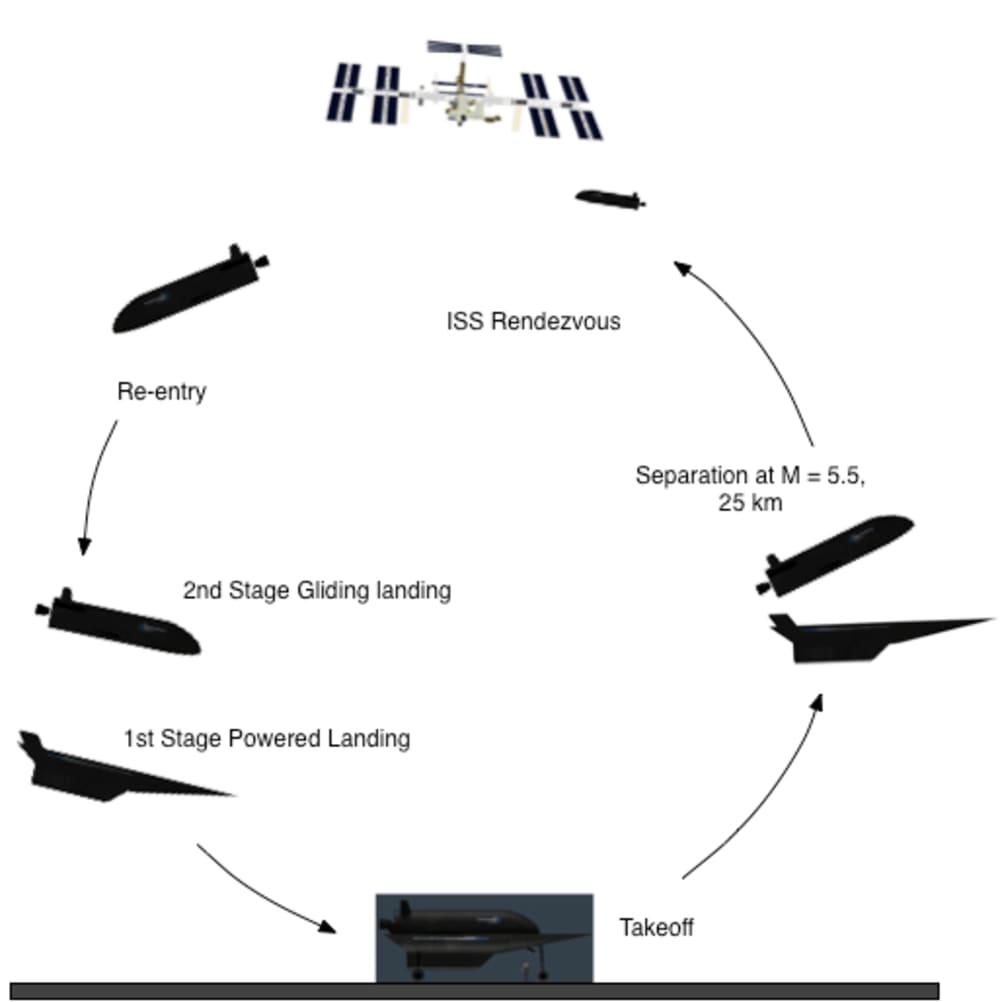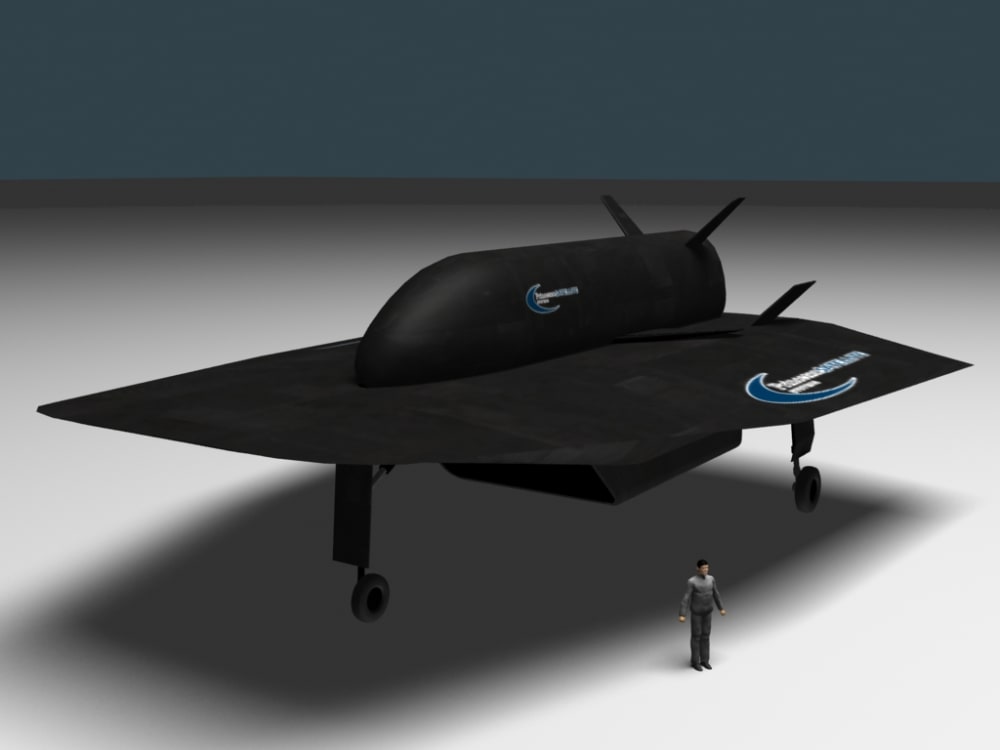The Space Rapid Transit (SRT) system is a two-stage-to-orbit (TSTO), horizontal takeoff, horizontal landing launch vehicle consisting of a high performance aircraft as the Ferry Stage and a cryogenic rocket powered vehicle as an Upper Stage. Both stages are designed to be fully reusable and rapidly deployable. The SRT has two versions, SRT-M for small satellite launches and SRT-C for carrying six crew members into orbit. The attached figures show the operations concept and comparative sizing of the SRT-M vehicle.
The innovative SRT assembles currently available technology into a system that delivers payloads into orbit with a low-risk development plan. First orbital flight would be possible within 3 years of funding. Optimal trajectory studies show that with a GLOW of 26,750 kg SRT can deliver 426 kg to the ISS. This exceeds the DARPA Falcon requirements for LEO payload by a considerable margin.
Advantages of the SRT are:
• Rapid launch readiness
• Powered ferrying to any launch site via the Ferry Stage
• Airplane-like safety and reliability in both stages
• Launch from any airport
• No special equipment needed for Upper and Ferry Stage mating
• Safe abort throughout the entire launch trajectory
• Complete reusability and fast turnaround
• Reaction Control System and Auxiliary Power Units use green propellant instead of toxic hydrazine
• Return the U.S. to the cutting edge of space flight
Virtually all of the technology required by the SRT has been developed under NASA, DARPA and Air Force programs. The hypersonic waverider design of the Ferry stage has been tested on the X-51 and LoFLYTE programs. The SRT Ferry stage employs a turbofan engine up to Mach 1.5 and a ramjet up to Mach 5.5. The regenerative subsonic combustion ramjet technology was developed by Langley on their Hypersonic Research Engine (HRE). The Ferry turbofan is the Pratt & Whitney F135. The Upper Stage employs the RL-10B-2. Staging is performed at or below Mach 5.5, which is within the regime of previous hypersonic fight experience. The SRT shows that the benefits of cost and safety associated with air-breathing launch vehicles are within our reach with the current state of the art.
Additionally, the two stage design allows new propulsion technology, such as scramjets, to be easily integrated into the system. The SRT-M would be developed first, and would fill a need in the U.S. space program for a responsive launch vehicle. Once the SRT concept has been validated with the SRT-M, the SRT-C would be developed, providing a substantial increase in the mass to orbit.
The SRT-C would be the ideal complement to a heavy lift launch vehicle. It has the potential to be ten times safer than the Space Shuttle, or any rocket, since the lower stage operates like an airliner. The SRT-C would also open the door to a new generation of high speed passenger and cargo aircraft.
Like this entry?
-
About the Entrant
- Name:Paul Griesemer
- Type of entry:teamTeam members:Michael Paluszek, Princeton Satellite Systems
Joseph Mueller, Princeton Satellite Systems - Hardware used for this entry:n/aSoftware used for this entry:Spacecraft Control Toolbox, Aircraft Control Toolbox
- Patent status:none








